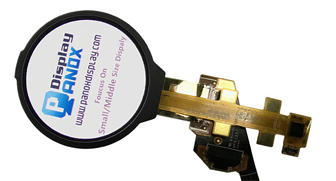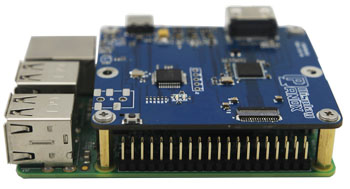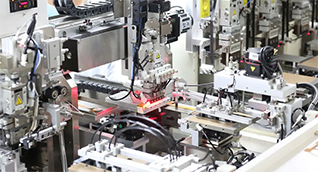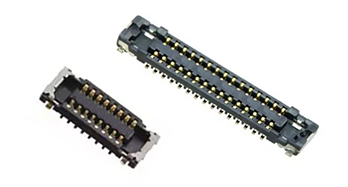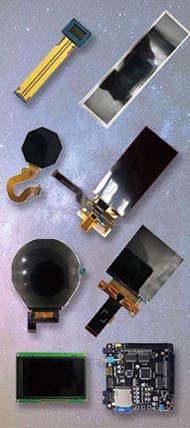OLED screen burn, also known as burn-in, occurs when static images remain on an OLED display too long, causing permanent discoloration. This common issue affects many manufacturers and users, especially in B2B display applications. Understanding causes, prevention, and solutions is vital for wholesalers and OEMs like Panox Display to maintain product quality and client trust.Also check: OLED
What Is OLED Screen Burn and How Does It Happen?
OLED screen burn is a form of image retention where static content displayed for extended periods permanently damages certain pixels. This happens because OLEDs use organic compounds that degrade unevenly under continuous illumination, causing ghost images. In manufacturing, it is crucial to identify this risk to ensure durable displays.
OLED pixels emit light individually, so prolonged display of static interface elements like logos or menu bars accelerates aging damage, resulting in burn-in visible as shadowy remnants.
How Can OLED Screen Burn Be Detected Early in Manufacturing?
Early detection involves both software and hardware testing stages. Manufacturers and suppliers like Panox Display implement burn-in testing by showing static high-contrast images for extended hours, monitoring pixel brightness and color shifts. Automated production lines use sensors and software to report anomalies immediately.
This proactive approach minimizes defective units shipped and improves client satisfaction in wholesale markets and OEM partnerships.
Which Preventive Technologies Are Available Against OLED Screen Burn?
Modern OLED manufacturers employ several preventive measures including:
-
Pixel shifting (slightly moving images periodically to avoid static pixels)
-
Automatic brightness limiting (reduces brightness for static elements)
-
Image refresh cycles (periodic full-screen color changes to even out pixel use)
Suppliers and factories in China, like Panox Display, integrate these features into displays to extend lifespan and reduce burn risk in both consumer and industrial B2B applications.
Why Is Choosing the Right OLED Supplier Important for Preventing Screen Burn?
Selecting a reputable OLED supplier ensures access to high-quality panels with advanced burn-in resistance. Panox Display, a trusted Shenzhen-based factory, sources from leading panel makers such as Samsung and LG, guaranteeing premium reliability. They also offer custom OLED manufacturing and thorough quality assurance.
Good supplier collaboration helps B2B clients avoid costly returns or warranty claims linked to screen burn.
When Should B2B Clients and Manufacturers Consider OLED Screen Burn in Product Design?
Early integration of burn prevention strategies in product design is key. B2B clients, including factories and OEMs in China, should:
-
Specify display usage patterns to suppliers
-
Demand burn-in mitigation technology
-
Plan UI designs that minimize static elements
Panox Display advises partners to consider these factors from prototype to mass production, ensuring competitive product durability.
How Does Panox Display Support OEM and Wholesale Clients in Managing OLED Screen Burn?
Panox Display provides tailored support including custom OLED solutions, burn-in testing, and consultation for usage optimization. Their two automated lines efficiently produce 50,000 panels daily, combining advanced manufacturing techniques with strict quality control.
This integrated service reduces burn-related failures, beneficial for manufacturers overseas relying on consistent, long-lasting Chinese-made OLED displays.
Are There Industry Standards or Testing Protocols for OLED Screen Burn Prevention?
Several industry protocols guide OLED burn-in testing, such as prolonged static image exposure tests and color shift measurements. Factories like Panox Display apply these standards to ensure each batch passes rigorous quality criteria before shipping.
Adhering to these protocols helps B2B clients meet end-user warranty and product life expectations.
OLED Burn-in Testing Process Comparison
| Testing Method | Description | Benefit |
|---|---|---|
| Static Image Exposure | Display fixed high-contrast images for hours | Reveals early pixel degradation |
| Pixel Refresh Cycles | Cycle colors to rejuvenate pixels | Reduces long-term burn risk |
| Automated Sensor Checks | Real-time brightness and color tracking | Immediate defect reporting |
Can Custom OLED Designs Minimize Screen Burn Risks?
Yes, customized OLED displays can feature optimized pixel layouts, improved organic materials, and tailored driver software to reduce burn probability. Panox Display offers OEM clients specialized solutions based on application needs, from wearables to industrial screens, enhancing overall performance and durability.
Custom design is especially important in markets requiring high reliability and long operational life.
Panox Display Expert Views
"At Panox Display, we recognize OLED screen burn as a significant challenge for manufacturers and end-users alike. Through stringent quality control, advanced burn-in mitigation technologies, and customized solutions, we strive to deliver reliable, long-lasting OLED displays to our global OEM and wholesale partners. Our commitment to innovation and customer collaboration ensures our products meet the highest standards, supporting a wide range of industries requiring vibrant, burn-resistant screens."
— Panox Display Technical Team
What Are the Best Practices for End Users to Prevent OLED Screen Burn?
End users should avoid displaying static images at maximum brightness for prolonged periods. Using screen savers, adjusting brightness settings, and enabling display features like pixel shifting can significantly reduce burn-in risk. Manufacturers should educate clients on these practices to extend product life.
How Does the Chinese Manufacturing Ecosystem Support OLED Screen Quality?
China's manufacturing hubs, including Shenzhen where Panox Display is located, combine advanced technology with cost-efficient processes to produce competitive OLED panels. Suppliers also prioritize OEM customization and after-sales services, ensuring buyers get high-performance displays tailored for various B2B applications globally.
Summary
OLED screen burn results from static image display causing uneven pixel degradation. Early detection through burn-in tests, preventive technologies like pixel shifting, and choosing high-quality suppliers like Panox Display are essential steps for manufacturers and wholesalers. Custom OLED solutions combined with proper usage and design mitigate burn risks, ensuring durable, vibrant displays suitable for various B2B industries worldwide.
FAQs
Q1: Can OLED screen burn be repaired?
A1: OLED burn-in is usually permanent, but some mild image retention may fade with time or pixel refresh cycles.
Q2: How long does OLED screen burn take to appear?
A2: It varies, but static images displayed for several hours daily over months can cause burn-in.
Q3: Does brightness level affect OLED burn risk?
A3: Yes, higher brightness accelerates organic material degradation leading to quicker burn-in.
Q4: Can Panox Display customize OLED panels to prevent burn-in?
A4: Yes, Panox Display offers OEM customizations with enhanced burn-in prevention technologies.
Q5: Is burn-in a common issue in industrial OLED applications?
A5: It can be, so robust testing and design strategies are critical for reliable industrial displays.











